Champagne & Sparkling Wine
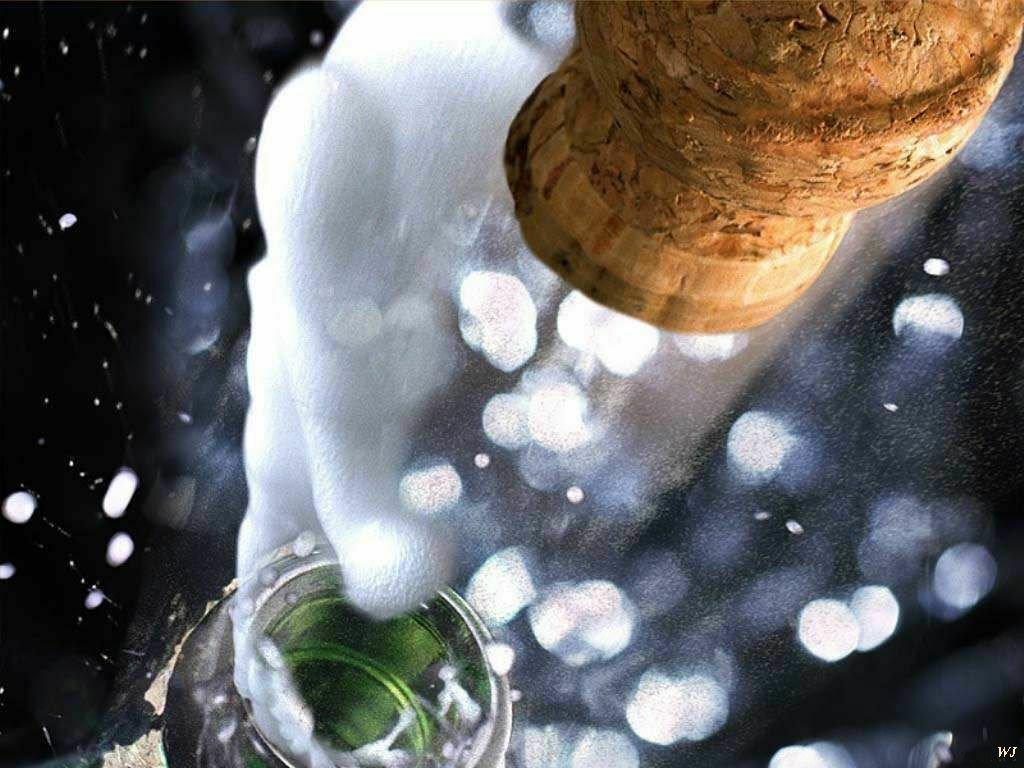
By Louis S. Luzzo, Sr.
I'm actually excited to be writing this month's Passport to Wine. With the Holidays upon us, I get to cover my all time favorite result of the fermentation of grapes, champagne. I absolutely adore it in all its forms and will never, ever, turn down a glass of 'the bubbly'. While Champagne is quite popular throughout most of the year, I was not surprised to learn that a full quarter (25%) of all the champagne & sparkling wine sold in a given year, is done so during the final week of the year between Christmas & New Year's. We are going to cover the ABC's of this wonderful sparkling beverage and I hope you enjoy reading it as much as I did writing it.
Let's start out by examining what makes champagne, well, champagne!
Champagne is produced exclusively in the Champagne region of France, the area from which it takes its name, and only wines made from this region are allowed and can properly be called champagne. While the term 'champagne' is used by some makers of sparkling wine in other parts of the world, most countries limit the use of the term to only those wines that come from the champagne appellation. In Europe, this is strictly adhered to due to its Protected Designation of Origin (PDO) status. Other countries, such as the United States, have some leeway with regard to the use of the term 'champagne' by use of a legal structure that allows those producers who have been making sparkling wine for a long period of time to continue to use the term 'champagne' under specific circumstances.
How It's Made


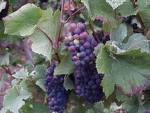
Champagne is a blend of, for the most part, three grape varieties; Chardonnay, Pinot Noir and Pinot Meunier. When making the base wine, grapes are pressed in a very careful method so as not to allow the color or bitter qualities from the skin to flow into the juice. This is especially true of the black grape types. This juice is then set aside and starts the first fermentation and aging process. Each batch of juice is set aside separately and blending is not done until after fermentation. Once this process is done, the juices are blended to make the base wine which is known as cuvée. In some cases, aged samples, as well as those from many different vinyards, are used. In very rare situations, it is possible that close to 100 different samples have been used to make this base wine.
 Contrary to legend and popular belief, Dom Pérignon did not invent sparkling wine. Around 1700, sparkling champagne, as we know it today, was born in France. However, the English scientist and physician
Contrary to legend and popular belief, Dom Pérignon did not invent sparkling wine. Around 1700, sparkling champagne, as we know it today, was born in France. However, the English scientist and physician 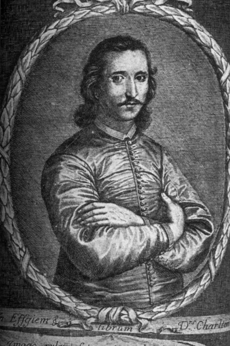 Christopher Merrett documented the addition of sugar to a finished wine to create a second fermentation six years before Dom Pérignon arrived in the Abbey of Hautvillers and almost
Christopher Merrett documented the addition of sugar to a finished wine to create a second fermentation six years before Dom Pérignon arrived in the Abbey of Hautvillers and almost
40 years before it was claimed that the famed Benedictine monk 'invented' champagne. This is the process that gives champagne and sparkling wine its 'bubbles'.
Méthode Champenoise is the traditional Dom Pérignon method by which champagne is produced. After primary and bottling, a second alcoholic fermentation occurs in the bottle. This second fermentation is induced by adding several grams of yeast and several grams of rock sugar. According to the Appellation d'Origine Contrôlée, a minimum of 1.5 years is required to completely Christopher Merrett develop all the flavor. In years where there is an exceptional harvest, a millesimé is declared. This means that the champagne will be very good and has to mature for at least 3 years. During this time the champagne bottle is sealed with a crown cap similar to that used on beer bottles.
As the yeast consumes the sugars, alcohol and carbon dioxide are produced. Since it is trapped in the bottle, it waits for you and I to 'pop' the cork and release it for all of us to enjoy, and yes, even to sometimes wear. A sediment is then formed that settles to the bottom of the bottle called lees. In the traditional labor intensive method of fermentation and aging, bottles are turned and rotated either manually or mechanically in a process called remuage for a period of up to three months to allow all the lees to settle into the necks of the bottles. After chilling the bottles, the neck is frozen, and the cap removed. The pressure in the bottle forces out the ice containing the lees, and the bottle is quickly corked to maintain the carbon dioxide in the wine. Some syrup is sometimes added to maintain the level within the bottle. I should note here that when buying 'cheaper', less expensive champagnes, the reason they are less expensive is that they do not go through méthode champenoise, the long and traditional process described above. They get their carbonation in the same way soda does, through compressed carbon dioxide gas blasted into the wine. This is the reason that truly well made champagnes are so delicate. The méthode champenoise creates very small bubbles that last quite a long time, while the compressed air carbonation method creates very large bubbles that have a short life and can actually be quite aggressive. History of Champagne Although the French monk Dom Perignon did not invent champagne, it is true he developed many advances in the production of this beverage, including holding the cork in place with a wire collar to withstand the fermentation pressure. In France, the first sparkling champagne was created accidentally; its pressure led it to be called 'the devil's wine' (le vin du diable) as bottles exploded or the cork jolted away. Even when it was deliberately produced as a sparkling wine, champagne was for a very long time, made by the méthode rurale, where the wine was bottled before the only fermentation had finished. Champagne did not utilize the so-called méthode champenoise, the second fermentation of adding of the yeast and sugar, until the 19th century, 300 years after Christopher Merrett documented the process. 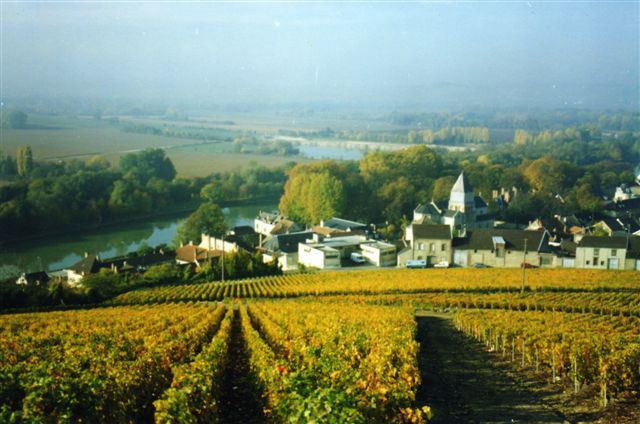 Although the first wine-producing vineyards in Champagne appeared between the 3rd and 5th centuries AD, the events of the 17th century brought the beginning of champagne as we know it today. The vine-growers of Champagne had learned how to stabilize their wines and keep them fresh for several years. As a result of their hard work and the preciseness, the Champenois also obtained a white wine by combining both black and white grapes using grapes that had been grown in the Champagne region. By the last decades of that century, they mastered the mysteries of effervescence, which was their stroke of genius.
Although the first wine-producing vineyards in Champagne appeared between the 3rd and 5th centuries AD, the events of the 17th century brought the beginning of champagne as we know it today. The vine-growers of Champagne had learned how to stabilize their wines and keep them fresh for several years. As a result of their hard work and the preciseness, the Champenois also obtained a white wine by combining both black and white grapes using grapes that had been grown in the Champagne region. By the last decades of that century, they mastered the mysteries of effervescence, which was their stroke of genius.
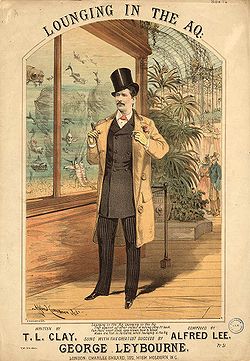 As with most great culinary discoveries, which seem to come from either Italy or France, champagne first gained world renown because of its association with the annointment of French kings. Royalty from throughout Europe spread the message of the unique sparkling wine from Champagne and its association with luxury and power. The leading manufacturers went well out of their way to make sure that they and the champagne they produced was associated with nobility and royalty. Through advertising and packaging, they sought to associate champagne with high luxury, festivities and rites of passage.
As with most great culinary discoveries, which seem to come from either Italy or France, champagne first gained world renown because of its association with the annointment of French kings. Royalty from throughout Europe spread the message of the unique sparkling wine from Champagne and its association with luxury and power. The leading manufacturers went well out of their way to make sure that they and the champagne they produced was associated with nobility and royalty. Through advertising and packaging, they sought to associate champagne with high luxury, festivities and rites of passage.
In 1866 the famous entertainer and star of his day, George Leybourne, began a career of making celebrity endorsements for champagne. The champagne maker Moët commissioned him to write and perform songs extolling the virtues of champagne, especially as a reflection of taste, affluence, and the good life. He agreed to drink nothing but champagne in public.
Types of Champagne
Vintage And Non-Vintage
Most of the champagne produced today is 'non-vintage,' meaning that is a blended product of grapes from multiple vintages. Most of the base will be from a single year vintage with producers blending anywhere from 10-15% (even as high as 40%) of wine from older vintages. A designated 'vintage' is usually up to the wine maker and specifically tied to conditions that are very favorable. 'Vintage' wine must be composed of at least 85% of the grapes from the vintage year. Under champagne wine regulations, houses that make both vintage and non-vintage wines are allowed to use no more than 80% of the total vintage's harvest for the production of vintage champagne. This allows at least 20% of the harvest from favorable vintages to be reserved for use in non-vintage champagne. In less than ideal vintages, some producers will produce a wine from only that single vintage and still label it as non-vintage rather than as 'vintage' since the wine will be of lesser quality and the producers have little desire to reserve the wine for future blending.
Blanc de blancs
Blanc de Blancs means 'white of whites' and is used to designate champagnes made only from Chardonnay grapes. The term is occasionally used in other sparkling wine-producing regions, usually to denote Chardonnay-only wines rather than any sparkling wine made from other white grape varieties.
Blanc de Noirs
Blanc de Noirs are white champagnes made only from the black grape varieties of Pinot Noir and Pinot Meunier. Typically, these sparkling wines are full-bodied and deeper yellow-gold in color. They are ideal for full-flavored foods, including meats and cheeses.
Pink or Rosé
Pink or Rosé champagnes are produced by one of two methods. The traditional method involves the addition of a small amount of Pinot Noir still wine to the base wine or cuvée prior to the second fermentation. The maceration method, or skin contact method, involves the pressing of the grape skins, allowing them to soak with the juice of the grapes prior to fermentation.
Prestige cuvée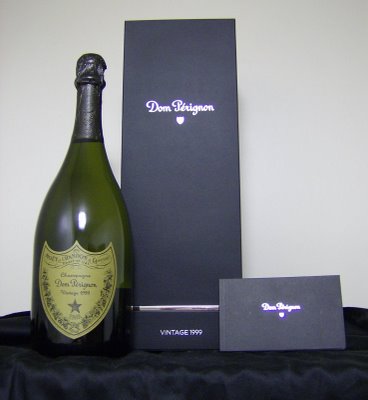 A prestige cuvée, or cuvée de prestige, is a proprietary blended wine (usually a champagne) that is considered to be the elite of a producer's range. Famous examples include Louis Roederer's Cristal, Laurent-Perrier's Grand Siècle, Moët & Chandon's Dom Pérignon, and Pol Roger's Cuvée Sir Winston Churchill.
A prestige cuvée, or cuvée de prestige, is a proprietary blended wine (usually a champagne) that is considered to be the elite of a producer's range. Famous examples include Louis Roederer's Cristal, Laurent-Perrier's Grand Siècle, Moët & Chandon's Dom Pérignon, and Pol Roger's Cuvée Sir Winston Churchill.
 The original prestige cuvée was Moët & Chandon's Dom Pérignon, launched in 1936 with the 1921 vintage. Until then, champagne houses produced different cuvées of varying quality, but a top-of-the-line wine produced to the highest standards (and priced accordingly) was a new idea. In fact, Louis Roederer had been producing Cristal since 1876, but this was strictly for the private consumption of the Russian tsar.
The original prestige cuvée was Moët & Chandon's Dom Pérignon, launched in 1936 with the 1921 vintage. Until then, champagne houses produced different cuvées of varying quality, but a top-of-the-line wine produced to the highest standards (and priced accordingly) was a new idea. In fact, Louis Roederer had been producing Cristal since 1876, but this was strictly for the private consumption of the Russian tsar.
Cristal was made publicly available with the 1945 vintage. Then came Taittinger's Comtes de Champagne (first vintage 1952), and Laurent-Perrier's Grand Siècle 'La Cuvée' in 1960, a blend of three vintages (1952, 1953, and 1955). In the last three decades of the twentieth century, most champagne houses followed these with their own prestige cuvées, often named after notable people with a link to that producer (Veuve Clicquot's La Grande Dame, the nickname of the widow of the house's founder's son; Pol Roger's Cuvée Sir Winston Churchill, named for the British prime minister; and Laurent-Perrier's Cuvée Alexandra Rosé, to name just three examples, and presented in non-standard bottle shapes (following Dom Pérignon's lead with its eighteenth-century revival design).
Champagnes also come in a variety of sweet to the extra dry. Here is a brief chart that will help you in picking the type that best suits your tastes:
Doux: Sweet
Demi-sec: Half-dry
Sec: Dry
Extra sec: Extra dry
Brut: Nearly completely dry
Extra brut / Brut zero: No added sugar at all
Sparkling Shiraz
This is a relatively new sparkling wine experience from the Shiraz producers of Australia, and I felt it deserved a mention here. As a fan of Shiraz, I was intrigued and found the wine to have all the characteristics of the traditional Shiraz that I admire, blackcurrants, blackberries, chocolate, cherries, strawberries, hints of tobacco with a rich smoky oak flavor and that trademark peppery finish.
Sparkling Shiraz wines should be served slightly chilled. If it's summer, place in the fridge for 30 to 40 minutes. However, if it's mid winter, then room temperature will do fine. The bottom line is you want it slightly cooler than you would serve traditional Shiraz, yet not quite as cold as a Chardonnay.
Opening a Champagne Bottle
The trick to opening a bottle of champagne while maintaining its integrity is to avoid 'popping' the cork. Also note that the better the champagne, the less 'pop' you will experience. Begin by scoring the foil around the base of the wire cage. Then, carefully untwist and loosen the bottom of the cage, but do not remove it. In one hand, enclose the cage and cork while holding the base of the champagne bottle with your other hand. Twist both ends in the opposite direction. As soon as you feel pressure forcing the cork out, try to push it back in while continuing to twist gently until the cork is released with a sigh.
The Drinking
This, of course, is my favorite part. Champagne should always be served chilled (43 to 48 F) and served in a champagne flute, a long stemmed glass with a tall, narrow bowl, thin sides and an etched bottom. You should hold the flute by the stem or base as opposed to the bowl and since 'clinking' seems to be the norm when consuming champagne, don't overdue it and be careful. I am a perfect example of what not to do when holding a delicate champagne flute, as one New Year's Eve, while trying to make a point rather overzealously, I found myself holding a base and stem while my bowl sailed across the room, getting the attention of a rather large fellow who was none to pleased, but that, my friends, is a story for another day.
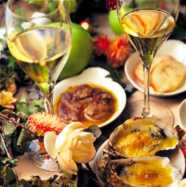 I have included below a simple guide as to which particular champagne goes with certain types of food so the next time you are hosting, you can wow all your friends with your acute knowledge of 'the bubbly.' This information is a compilation gleaned from various food and wine magazines.
I have included below a simple guide as to which particular champagne goes with certain types of food so the next time you are hosting, you can wow all your friends with your acute knowledge of 'the bubbly.' This information is a compilation gleaned from various food and wine magazines. Blanc de Blanc Champagne: Oysters, crustaceans and gently flavored white fish.
Blanc de Noirs: Lighter meat dishes (pigeon breast, partridge, veal, pork). If it's an aged wine, it can stand up to a bit richer protein such as kidneys or venison.
Non-Vintage Champagnes: Especially young and fruity versions are recommended with cheeses such as Beaufort, Gruyère, Emmental. Older non-vintage champagnes can cope with dishes with darker, nuttier flavors. (Caviar for instance)
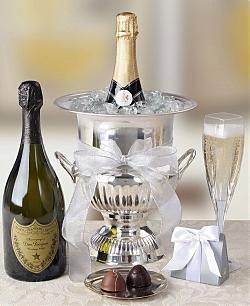 Vintage Champagnes: Great with black truffle,scented foods, cheeses such as Parmesan and lightly smoked foods. Younger vintage champagnes can provide a foil for a wide variety of dishes, from fish with rich sauces to poultry (especially duck), light meats (veal and pork) and many cheeses (Chaource and Lancashire). Japanese dishes are also suggested.
Vintage Champagnes: Great with black truffle,scented foods, cheeses such as Parmesan and lightly smoked foods. Younger vintage champagnes can provide a foil for a wide variety of dishes, from fish with rich sauces to poultry (especially duck), light meats (veal and pork) and many cheeses (Chaource and Lancashire). Japanese dishes are also suggested.
Non-Vintage Rosé: Prawns, lobster and other seafood work here.
Vintage Rosé: Aged vintage rosé champagnes have a rich, savoury character that can pair well with meat dishes, and have the power to stand up to high levels of herbs and spices, specifically basil, mint and coriander.
Demi Sec Champagnes: These go superbly with savoury dishes, foie gras is an obvious example. If there is an edge of sweetness to the food (caramelization, a fruit ingredient or sugar,) then this style can provide a better match than a dry selection. These also pair well with most desserts as long as they are not overly sweet.
The only hazard in drinking champagne tends to be that it is so delicate in body and flavor, it is very easy to find yourself a bit tipsy rather quickly. As always, do enjoy it, but don't overdo it. As we all know, anything in excess tends to not be a good thing. I hope that you have learned a bit more about champagne than you already knew, but the learning here is not in the reading, my fellow Champagne-ites, it's in the drinking, so go out and eat, drink and be merry!


